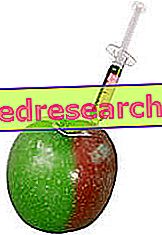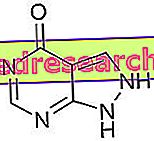What is that
Wheat bran is a waste product resulting from the refining of triticum eastivum .

Economic value
Analyzing the REAL economic value of wheat bran and comparing it to the marketing price, it is easy to see that the difference in profit exceeds 10, 000%. This basically happens for two reasons:
- The food supplement industry is a sector in which PERFORMANCE seeks the maximum gain with the least expense, taking care relatively little of the concrete utility of the product sold. In the specific case, wheat bran is proposed as an essential ingredient
- for the prevention and treatment of some intestinal discomforts (constipation and irritable bowel syndrome)
- as a filler (increased satiety)
- as a food rich in mineral salts, vitamins and polyunsaturated fats.
- The costs of packaging and marketing itself far exceed the value of wheat bran; therefore, the mark-up given to it affects MORE than the costs of the raw material. Furthermore, if we consider that in the automated production of the flour the grinding for "whole wheat" DOES NOT EXIST, it is understandable that the process to obtain it can be the following:
- Bran separation from wheat
- Production of refined flour
- Re-addition of wheat bran to refined flour.
In this way, the food industries get lower overall production costs (for the maintenance of only one plant), but spend more on re-adding bran to whole wheat than to the refined product.
Nutritional properties
From a nutritional point of view, wheat bran is a component that enriches the diet of INSOLUBLE dietary fiber . Although it may be useful for the prevention of constipation, irritable bowel syndrome and colon cancer, its usefulness in the treatment of diverticulosis is questionable. Wheat bran (for humans) is not completely digestible, it follows that during digestion its residues could infiltrate inside the diverticula, inflaming them and giving rise to diverticulitis. On the contrary, in the treatment of diverticulitis it would be much more useful to consume fruits and vegetables (without peel and without seeds) as they are richer in fiber SOLUBLE (not digestible but gelling).
Nutritional composition of wheat bran
| Power | KCal | 206 |
| water | g | 8.2 |
| proteins | g | 14.1 |
| Lipids | g | 5.5 |
| Saturated | g | 0.89 |
| Monounsaturated | g | 0.87 |
| polyunsaturated | g | 2.82 |
| B.C. Linoleic | g | 2.63 |
| Ac Linolenico | g | 00:19 |
| Cholesterol | mg | 0 |
| carbohydrates | g | 26.6 |
| Simple | g | 3.8 |
| Iron | g | 12 |
| Magnesium | mg | 550 |
| Thiamine | mg | 0.89 |
| Niacin | mg | 29.6 |
| Tocopherol | mg | 1.6 |
Advantages of the Integral
Analyzing the chemical composition of wheat bran, it seems obvious that refining flour can do nothing but impoverish food.
First of all, the energy supply of wheat bran is 45% lower than refined flour; this means that consuming a non-purified product would benefit the hypocaloricity of foods, preventing the increase in weight. Secondly, bran contains more protein and essential polyunsaturated fats. Furthermore, by analyzing the micro-nutritional aspect, wheat bran boasts excellent amounts of:
- Iron: although not in EME form, it contributes positively to daily intake
- Magnesium: being an alkalizing agent, it is very useful in the sportsman's saline homeostasis
- Thiamine: which should be introduced in doses of 0.4 mg every 1000 kcal
- Niacin: contained in a decidedly MASSIVE quantity and which should be introduced in doses of 6.6 mg per 1000kcal
- Tocopherol: closely related to the intake of polyunsaturated fatty acids (PUFA) and which should be introduced in doses of 0.4mg per 1g of PUFA, for a total of about 8mg / day.
Ultimately, wheat bran is not a food that is worth the PRESENT marketing cost; however, its curtailment from wheat flour significantly penalizes the food quality of all its derivatives: pasta, bread, pastry and baked goods in general.



